A Khar café’s newly launched sattvik menu focuses on lightly spiced and well balanced fare. We invited a reader who’s adopted this lifestyle for seven years for this taste test
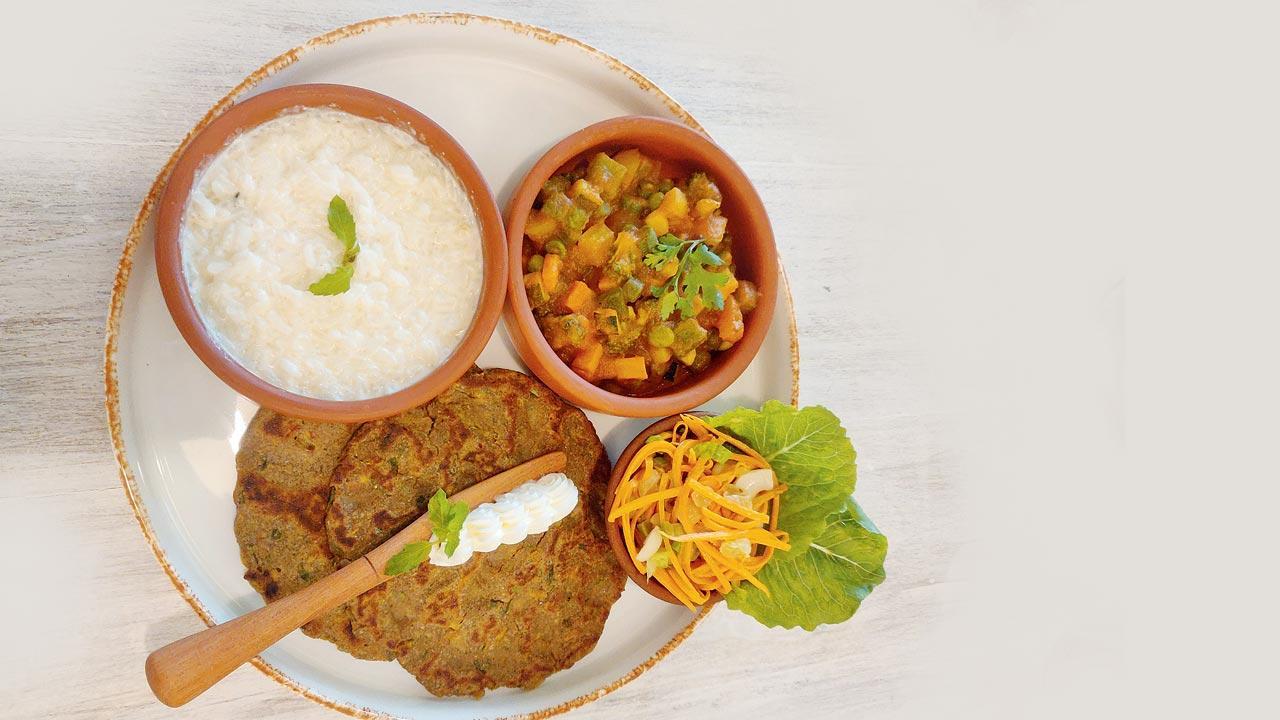
Sattvik thali
Sattvik food is not rocket science. It is actually simplifying your food to the extent that it requires herbs and spices that aid digestion, and add value to your body. It celebrates raw and rightly cooked local, fresh and seasonal produce.
At Sante Spa Cuisine in Khar, a newly launched small menu introduces patrons to fare without oil, garlic and onions. “Sattvik food does not cater to the taste buds. We use basic masalas like cumin, salt, green chillis, and ginger for seasoning and flavouring; all the food is made in pure ghee. We’re currently ruled by the kitchens using the infamous garam masalas in everything we eat, making our bodies behave differently than they should,” explains chef Shailendra Kekade, adding that sattvik is everything to do with nourishment, and inspired by food our grandparents ate. The menu adapts foreign as well as Indian food cultures. “Suddenly, people have realised charcoal is good for you,” he smiles, leaving for the kitchen to prepare for our conscious meal of the day.
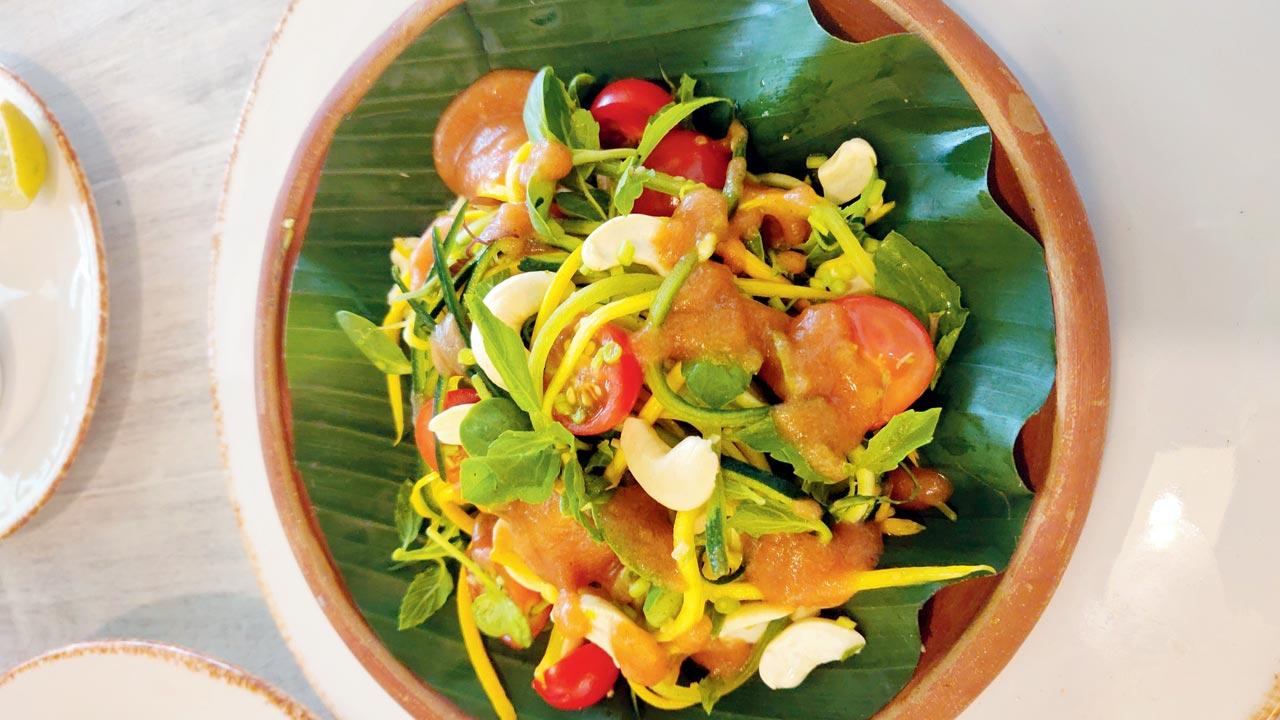 Zucchini Sante salad
Zucchini Sante salad
Accompanying us is millennial Ananya Gandhi, whose first tryst with sattvik food was at the age of 16, when she attended a yoga camp at The Yoga Institute in Santacruz. As we sip on cocoash nectar (Rs 120) which has a sweet mix of tender ash gourd and coconut water juiced up, Gandhi tells us about her sattvik food and lifestyle experience.
“Every day, we had exercises and games that introduced us to the practice of yoga. We would all look forward to the snack they offered at the end. Sometimes, it was poha and chaas, and on other occasions, it was a prasad, but everything we were told was made mindfully, and with ingredients that are meant to create a balance in our bodies, not aggravate it. It is from there that I picked up the habit — which continues today — of drinking tulsi water,” the 23-year-old lawyer tells us. Before the meal, they were encouraged to recite slogans in Hindi that translated to: Your salvation and your wellbeing is in looking after yourself and doing what is better for you; it is the choices you make. “This made us connect with the food we were about to consume,” she explains.
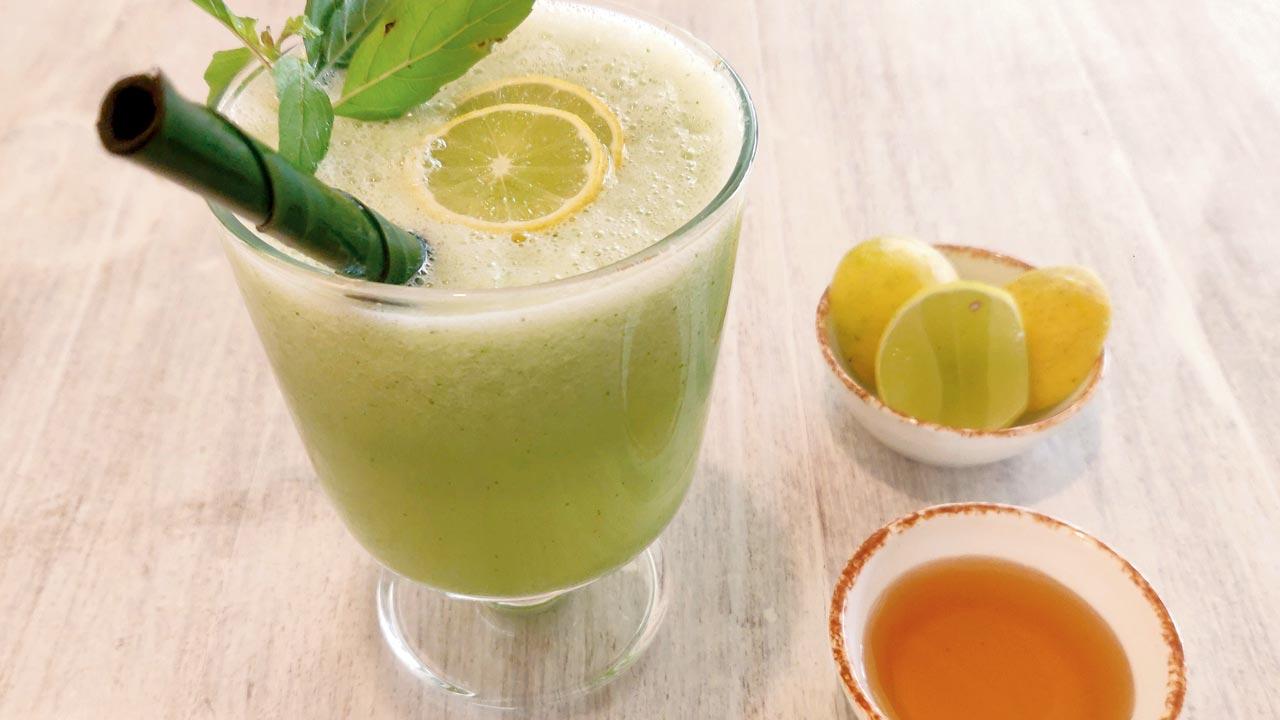 Cocoash nectar
Cocoash nectar
Our meal is delicious, debunking the myth that basic food cannot be palatable. The hot pumpkin parfait (Rs 240) is a creamy, light broth with coconut milk, herbs and chilli. It is simple on the palate without stressing it too much. The chestnut and spinach cream (Rs 240) soup has a green puree cooked in coconut milk, jeera and garnished with edible marigold petals. We lap up the soup with puritan salad (Rs 320), which is a raw mix of cucumber, carrot, capsicum, tomatoes with coriander, fenugreek, and alfalfa sprouts. We are not fans of salad but we might have just been converted with the zucchini Sante salad (Rs 320) which includes raw tomatoes, and a creamy herb dressing soaked in cashew. The dressing is khajur chutney that adds a perfect balance between the tangy lemon drizzle. The Sante satvik bhojan (Rs 620) has a simple mixed vegetable bhaji that reminds us of the preparation our mom would make in our dabba during our school days. Served with a flatbread made of vegetable mash, it is served with curd rice cooked in coconut milk and jeera, and is satisfying and wholesome.
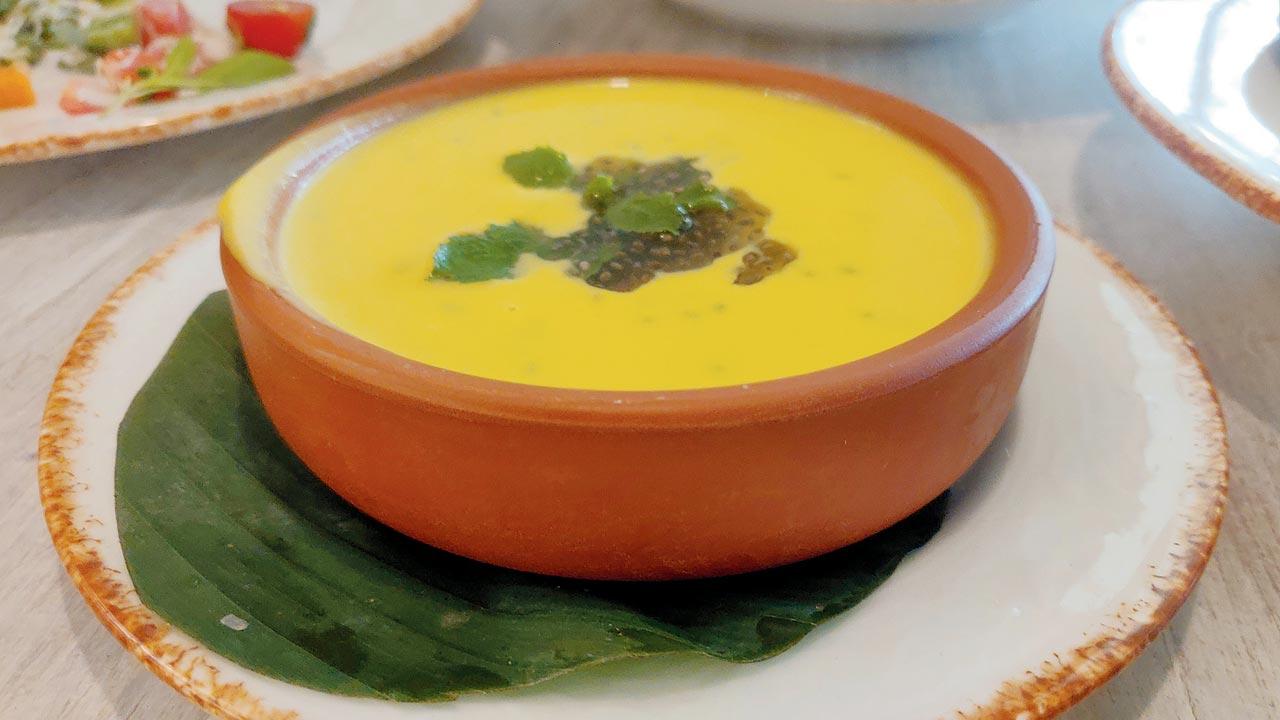 Pumpkin soup
Pumpkin soup
The star dish for us is the methi mungo casserole (Rs 420), which is a raw mix of green moong, fresh fenugreek, diced vegetables, seeds and herbs, with a ginger lemon chilli dressing. The meal is like zooming into every ingredient and being able to appreciate and taste it for its flavours.
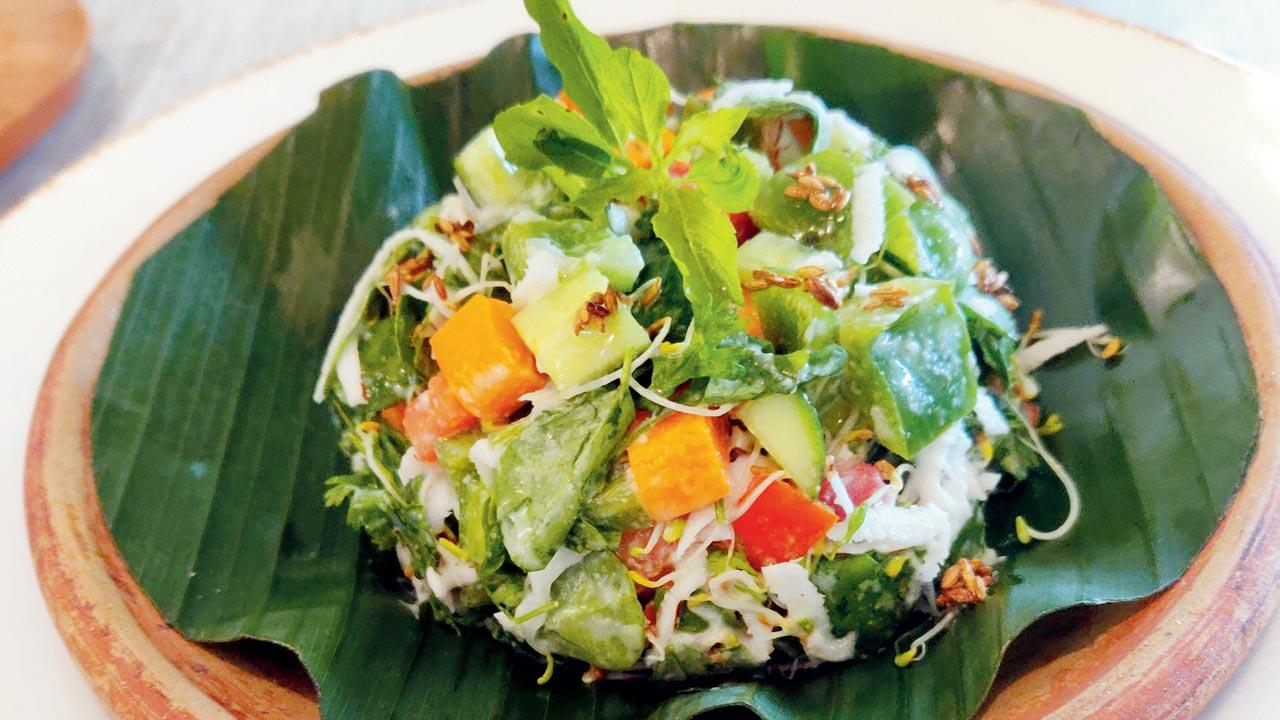 Puritan salad
Puritan salad
Our ‘woke’ millennial signs off with a nugget: “Eating tulsi is better than chewing gum. It removes the odd tastes from your mouth and keeps you cool too.”
Time 11 am to 11 pm
At Sante Spa Cuisine, Fortune Paradise, road number 3, Khar West.
Call 8767861111
 Subscribe today by clicking the link and stay updated with the latest news!" Click here!
Subscribe today by clicking the link and stay updated with the latest news!" Click here!










